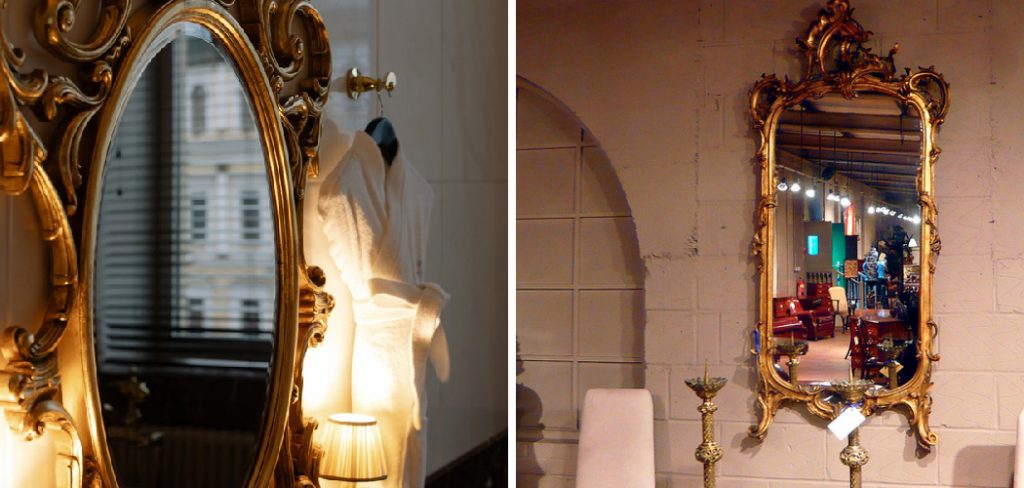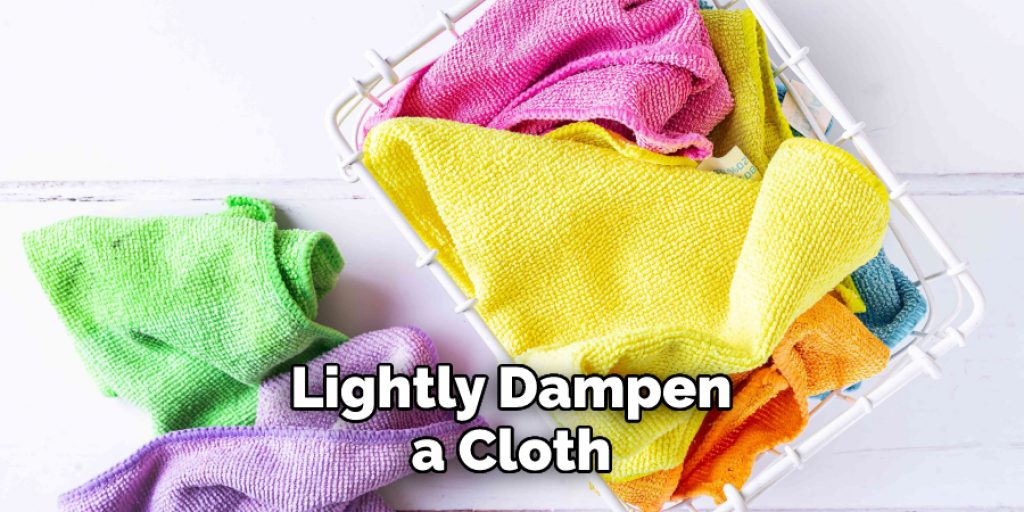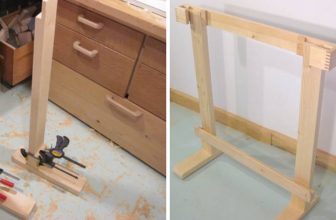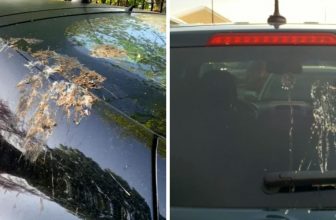How to Clean an Antique Mirror
When it comes to antique mirrors, proper cleaning and maintenance are essential for preserving their original beauty.

Mirrors generally need regular cleaning, but with antique mirrors, the task is a bit more delicate as harsh abrasives and chemical cleaners can potentially damage the glass surface or tarnish the frame. Knowing to clean an antique mirror correctly will keep it looking its best and help ensure that you don’t damage the mirror or decrease its value.
The advantages of cleaning an antique mirror are numerous. Not only will it look better, but it will also increase its value and be a great conversation piece in your home or office. Cleaning an antique mirror requires patience, special care, and the right products to ensure that you do not damage the delicate glass or frame. You can find step-by-step instructions on how to clean an antique mirror in this blog article.
Step-by-Step Processes for How to Clean an Antique Mirror
Step 1: Inspect the Mirror for Damage
Before you begin cleaning your antique mirror, it is important to inspect the surface for any cracks or chips. If you find any damage on the mirror, do not proceed with cleaning, as this could further weaken and damage the glass. Make sure to use high-quality products designed specifically for cleaning antique mirrors. These products are usually free of abrasives and are safe to use on delicate glass surfaces.
Step 2: Dust Off the Mirror
Before cleaning, use a feather duster or a soft cloth to remove any dust or dirt from the mirror surface gently. Make sure not to rub too hard, as this could scratch the glass. Fill a bucket or bowl with warm water and add a few drops of mild soap. Dip your cloth into the solution, wring it out until it’s barely damp, and use this to clean the mirror surface. Make sure not to scrub too hard, as this could cause scratches on the glass.
Step 3: Wipe Off the Soap Solution
After you have finished cleaning the mirror, use a clean cloth or paper towel to wipe off all of the soap solutions from the mirror surface. Make sure not to leave any residue behind, as this could cause streaking when the mirror dries. Once you have finished wiping off the soap solution, use a soft cloth to dry the mirror surface. Use gentle strokes, and be sure to get into all of the crevices and corners.
Step 4: Polish with Window Cleaner
Use a window cleaner on the surface to bring back the mirror’s shine. Spray the cleaner onto a soft cloth and wipe it over the entire surface. Ensure you do not spray directly onto the glass, as this could damage the antique mirror. If you notice any streaks from cleaning or polishing the mirror, use a piece of newspaper to buff them away. Make sure you do not rub too hard, as this could cause scratches on the surface.
Step 5: Shine with Vinegar Solution
To bring back some of the lost shine of your antique mirror, combine equal parts white vinegar and water and dip your cloth into the solution. Wring the cloth out until it’s barely damp, and wipe over the mirror surface with gentle strokes.

Once you have completed all of the steps, take a few moments to re-inspect your antique mirror for any chips or cracks that could have occurred during the cleaning process. If you see any damage, discontinue cleaning immediately and consult an expert for advice.
Once you have finished all of the steps, stand back and admire your beautiful antique mirror. Make sure to take some time every few weeks or months to clean it again to keep it looking beautiful. By following these steps, you can easily and safely clean your antique mirror.
Tips for How to Clean an Antique Mirror
- Ensure that the mirror is strong and stable enough to move or be cleaned before beginning. Check for any signs of damage, such as cracks, chips, discolorations, or other imperfections in the glass.
- Use a soft cloth when cleaning an antique mirror, rather than paper towels or anything else that might be too harsh.
- When cleaning, use a mixture of warm water and mild dish soap or detergent to avoid harsh chemicals that may damage the glass.
- Avoid using any abrasive materials such as steel wool or scouring pads when cleaning an antique mirror.
- Use a soft-bristled brush for dusting off the frame of the mirror.
- Avoid using any type of chemical cleaner on an antique mirror, as it can damage the glass and frame.
- Never use a vacuum cleaner to clean or dust an antique mirror, as the suction could cause it to break.
- If you cannot reach all areas of the surface with your cloth, use an anti-static dusting spray to help reduce the buildup of dirt. Be sure to use it sparingly and wipe away any excess immediately.

Following these tips can ensure that your antique mirror remains to look beautiful for years to come.
How Often Should You Clean Your Antique Mirror?
It is important to clean your antique mirror regularly to keep it looking its best and prevent any damage from occurring. How often you should clean your antique mirror depends on how much dust and dirt has accumulated on its surface. For lightly dusty mirrors, cleaning every few weeks should suffice. For heavily soiled mirrors, weekly cleanings may be necessary.
To clean your antique mirror, use a vacuum cleaner to gently remove any dust and dirt on the mirror’s surface. Make sure to use a soft brush attachment to avoid scratching or damaging the glass. Next, dampen a microfiber cloth with warm water and wipe down the entire surface of the mirror.
Don’t use any harsh chemicals or abrasive cleaning products, as they could damage the antique mirror. Finally, dry the surface of the glass with a soft, lint-free cloth to prevent water spots from forming. Once your antique mirror is clean and dry, it should be good to go! With regular maintenance and care, your antique mirror should retain its beautiful appearance for years to come.

How Can You Safely Remove Dust and Dirt From the Surface of an Antique Mirror Without Scratching It?
- Begin by preparing a cleaning solution. Mix one white vinegar with four warm water in a bowl or bucket.
- Dip a soft, clean cloth into the mixture and lightly wring it out so that it is damp but not wet.
- Wipe down the surface of the antique mirror in gentle, circular motions.
- Rinse the cloth in warm water and repeat the process until all dirt and dust is removed from the mirror’s surface.
- Dry the mirror with a clean, dry cloth before allowing it to air-dry completely.
- To remove any remaining residue or smudges, use a small amount of olive oil on a clean cloth and wipe the surface in gentle, circular motions.
- Rinse off the olive oil with warm water and dry the mirror with a clean, dry cloth before allowing it to air-dry completely.
- If necessary, you can also use glass cleaner or a window-cleaning solution for a deeper clean, but make sure to use a soft cloth that won’t scratch the surface of your antique mirror.
Follow these easy steps to properly and safely clean an antique mirror without fear of scratching its delicate surface. With regular maintenance, you can keep your antique mirror looking like new for years to come.
How Can You Prevent Your Antique Mirror From Becoming Scratched or Damaged?
To ensure your antique mirror stays in good condition, you should avoid using any liquid cleaners on the glass. Even mild soaps can damage the glass and leave unsightly streaks or residue. Instead, use a soft cloth to gently remove dust and dirt from the surface of the glass. If necessary, you can lightly dampen the cloth with distilled water. Make sure to dry off the glass immediately afterward with a clean cloth.
Avoid using metal or plastic polishes and cleaners on the frame of your antique mirror, as these can leave scratches or discolorations on the surface. Instead, use a soft bristle brush or a microfiber cloth to dust off any debris or dirt from the frame.
If necessary, you can lightly dampen a cloth and use this to wipe away stubborn dirt or dust. When moving your antique mirror, be sure to cover it with a soft cloth or blanket so that it doesn’t become scratched in transit. Additionally, avoid putting too much pressure on the glass, as this could cause it to break. If you’re hanging an antique mirror, use a strong wall anchor and ensure the wall is of sufficient structural integrity to hold the weight.

Conclusion
In conclusion, cleaning an antique mirror can be a tricky task. It is important to take the proper precautionary measures when polishing and cleaning your mirror to avoid damaging it. The three steps above will help you keep your mirror looking new – dust, polish, and wipe down with a soft cloth. With the correct approach, you can maintain the classic look of an antique mirror for many years to come.
Finally, if you have any questions or concerns about cleaning your antique mirror, it is best to consult a professional. They will be able to advise you on the best methods and products for safely cleaning and preserving your precious item. I hope this article has been beneficial for learning how to clean an antique mirror. Make Sure the precautionary measures are followed chronologically.




